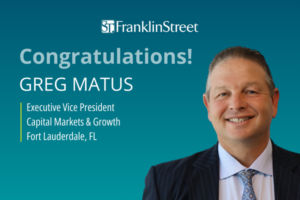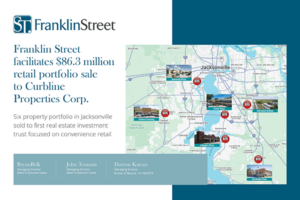Tampa’s retail market has achieved a full recovery, as proven by rising rents and the tightening of space, making it ripe for new construction. Tampa has historically been a $16 per square foot average rent market, but rents are expected to climb as high as $18 per square foot on average in the coming years.
Fueling the recovery, Tampa’s job growth continues to outpace the rest of the state. The Tampa-St. Petersburg- Clearwater market led Florida’s metropolitan areas in job creation in the fourth quarter of 2015, according to the Hillsborough Economic Development Corp., with an additional 38,800 jobs created, a 3.1 percent year-overyear increase and a 138 percent increase in the same period from 2013 to 2014. Many new jobs announced last year will be filled in 2016, supporting growth in the office, housing and retail sectors, as well as a strong overall economy.
Boom in Development
The biggest retail opening in recent months was Simon Property Group’s Tampa Premium Outlets, which was 100 percent leased when the 441,000-square-foot property opened in October 2015. The property is located within the Wesley Chapel area, which has been a hotbed of retail activity since the Shops at Wiregrass opened in 2008. In a similar vein, Tampa Premium Outlets has already sparked additional development adjacent to the property and across State Road 56. Costco Wholesale is currently under development on a 155,000-square-foot store west of the property, and there’s talk of a potential power center on parcels of land on the north side of State Road 56. There will also be numerous freestanding and smaller multi-tenant retail and restaurant projects on both sides of SR 56. The Shops at Wiregrass is also working on a Phase II expansion.
Southeast Hillsborough County has been another hotbed of activity thanks to the addition of St. Joseph’s Hospital- South, which opened last year. Two more hospitals are planned in the area, and the corridor is likely to become a regional medical destination. The trade area is currently underserved for retail and restaurants, and as a result we expect to see some new development taking shape there to serve the growing demand.
Hyde Park Village in south Tampa is undergoing a long-awaited redevelopment. WS Development is successfully transforming Hyde Park Village by adding new-to-market retailers such as Suitsupply, The Shade Store and Vineyard Vines, as well as new restaurants Bartaco, On Swann, Meat Market and a revival of iconic Tampa restaurant brand Goody Goody.
Downtown is becoming more dense and urban, with numerous development and redevelopment projects that will add more residents and additional retail space to the area. The relocation of the University of South Florida Medical School to downtown is a game changer and will certainly fuel the demand to live, work and play downtown. We are excited to watch and participate in the redevelopment of Channelside Bay Plaza, which Franklin Street manages and leases.
Retailers Seeking Entry
In Tampa we are seeing similar trend lines to what’s occurring nationwide, with grocers, sporting goods stores and restaurants seeking to grow withinor enter the market. While Florida has been and will likely continue to be largely dominated by Publix, organic grocers such as Sprouts Farmers Market, Earth Fare and Lucky’s Market are actively seeking space. Grocery stores remain a strong anchor for new developments and redevelopments, and we expect to continue to see them pop up on site plans in coming years.
Sporting goods retailers including Bass Pro Shops and Dick’s Sporting Goods have had solid expansion in the market, and Cabela’s and Academy Sports + Outdoors are both rumored to be working on sites in Tampa Bay. Even with Sports Authority announcing its bankruptcy in early March, there is actually potential for some of those locations to be backfilled by other sporting goods retailers.
The big growth category remains quick service restaurants (QSRs). With a more stable economy, people are spending money to go out to eat again, and developers and landlords are seeing restaurants serve as anchor tenants. With the strong demand for restaurant space, landlords have the ability to qualify and choose the appropriate restaurant concepts to anchor their properties. Even established chains are having limited success securing new locations. There are numerous full-service restaurants and QSR brands struggling to find suitable real estate for their first locations in the market. Rising rents and strong demand are finally fueling an upcoming wave of retail development and redevelopment that will help usher new tenants to the market.
Strong Investment Sales
With the triple-net and multifamily markets at pricing higher than what we saw pre- recession, buyers have looked to retail to achieve higher yields. Tampa and Central Florida are unique to other areas of the state in that the foreign buyer that started buying in southeast Florida has had to move north to find better yields as returns are further compressed in the
southern part of the state.
Historically low interest rates, uncertainty in other investment vehicles like stocks, bonds and energy and a lack of supply have all contributed to the resurgence of the retail market. While cap rates on triple-net and Publix grocery- anchored shopping centers are at historic lows, cap rates for unanchored retail or non-grocery anchored centers are still very attractive in today’s frothy market. Generally speaking, cap rates today for this product have not dropped to what we saw in 2007 and 2008 but are getting close to those numbers. Brokers have continued to push cap rates down, but in the last six months we have started to see that buyers are starting to push back on how low they will go.
We are seeing a lot of “price reductions” or deals sitting on the market because brokers pushed the envelope beyond what the buyer pool is willing to accept. We do not foresee much change to the cap rates or sales velocity in 2016 even if the Fed increases the fund rate another 25 basis points.



